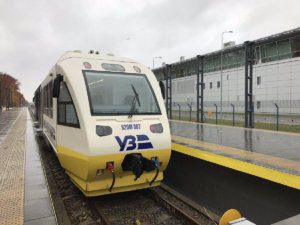
PJSC Ukrzaliznytsia in November 2018 will launch an express train to the Boryspil international airport (Kyiv region).
“In February was the project, in May – the start of works, and in October – a test launch of the train. In November it will be the launch of the express train,” Prime Minister of Ukraine Volodymyr Groysman said on his Twitter account on Thursday.
The prime minister said that the cost of the project was about UAH 580 million, recalling that the estimated cost of the “infamous Air Express” in 2010 amounted to UAH 3.2 billion.
Groysman also pointed out the convenience of creating a covered gallery between the airport terminal and express platform.
As reported, Transportation on the Kyiv city-the Boryspil international airport route could reach 3.8 million passengers in 2019, according to Ukrzaliznytsia. The company expects that with a ticket price of UAH 80 the payback period for the project will near 10 years. Ukrzaliznytsia does not deny the scenario of increasing the cost of travel, depending on the demand for the service, as well as the factors that negatively affect its production cost for the company.
The estimated travel time will be 35-40 minutes.
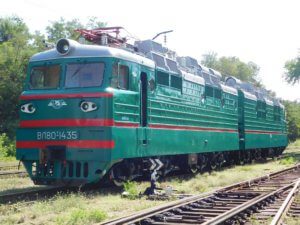
Ukrainian grain farmers cannot timely execute contracts for exports of products due to a shortage of locomotives at Ukrzaliznytsia, the Ukrainian Agribusiness Club has reported. “The main problem of PJSC Ukrzaliznytsia, which impedes the efficient transportation of grain, is a shortage of locomotives. Due to a lack of traction, wagons stand idle at stations and elevators, while the turnover of cars of Ukrzaliznytsia’s Transport Logistics Center has increased from five to 11 days over the last two years, private to 13 days,” the report says.
According to the association, delays in the transportation of grain crops lead to a breach of export contracts, while transportation rates are declining, and gross production is rising. According to the union, only 500 out of 2,500 Ukrzaliznytsia locomotives work, while the overhauls of many of them were carried out in the 1990s.
At the same time, the association noted an increase in the number of grain wagons in the country: about 11,500 cars are owned by Ukrzaliznytsia, about 10,000 are private.
According to the Ukrainian Agribusiness Club, it’s not worth expecting a speedy improvement in the situation with rail transportation because of a lack of funds at Ukrzaliznytsia for the purchase of locomotives in the near future.
CONTRACTS, EXPORTS, GRAIN FARMERS, LOCOMOTIVES, UKRZALIZNYTSIA
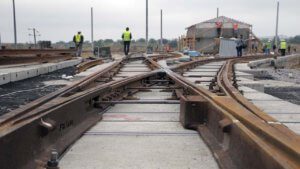
PJSC Ukrzaliznytsia plans to start works to electrify the Dolynska-Mykolaiv-Kolosivka rail section in March 2019.
The company said that the ratification of the financial agreement between Ukraine and the European Investment Bank (EIB) under the Ukraine Railway Modernization Project by the Verkhovna Rada would allow launching an open tender to select a general contractor to electrify the Dolynska-Mykolaiv-Kolosivka rail section.
The company expects to use the first tranche at the end of May 2019. The minimum size of the tranche is EUR 5 million, and the total number of tranches will be up to 20, acting Board Chairman of Ukrzaliznytsia Yevhen Kravtsov said.
The project provides for two phases of implementation: work on the Dolynska-Mykolaiv section (the operational length is 148 km) is scheduled from March 2019 to May 2023, and on the Mykolaiv-Kolosivka section (105 km) from June 2019 to October 2021.
As reported, the Verkhovna Rada has ratified a financial agreement (Ukraine Railway Modernization Project) between Ukraine and the EIB on the provision of a EUR 150 million loan to Ukraine, foreseeing funding of the modernization and expansion of the Dolynska-Mykolaiv-Kolosivka railway section.
In January 2018, the Cabinet of Ministers of Ukraine approved the project on the reconstruction of the Dolynska-Mykolaiv railway section with increased capacity of the Znamianka-Dolynska-Mykolaiv section.
On December 19, 2016 a financial agreement on the Ukraine Railway Modernization Project (modernization of the infrastructure of PJSC Ukrzaliznytsia) was signed with the EIB, which provides for a loan of EUR 150 million.
DOLYNSKA-MYKOLAIV-KOLOSIVKA, ELECTRIFICATION, RAIL SECTION, UKRZALIZNYTSIA

Ukrzaliznytsia has repaired and reconstructed 351 km of track from the planned 1,935 km this year, the company’s press service has reported. In January-August 2018, the company reconstructed almost 184 km of track and overhauled more than 167 km, replaced 106 railroad switches for new sets. In September it is planned to reconstruct 36.1 km of track, overhaul 34 km of track, repair 118.6 km, and renew 55.4 km of track on various directions.
In general, it is planned in 2018 to repair 1,935 km of track and 1,317 sets of railroad switches. “Without an economically fair tariff, there will remain a maximum of 5,000 km out of 20,000 km of track in Ukrzaliznytsia in 10-15 years,” director for economics and finance at Ukrzaliznytsia Andriy Riazantsev said.
In the eight months of 2018, Ukrzaliznytsia invested almost UAH 8.5 billion in the development of its fixed assets, in particular, in modernization of infrastructure, the acquisition and repair of rolling stock.
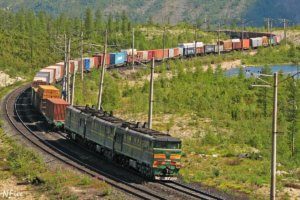
Ukrainian producers of construction materials are concerned about a rise in Ukrzaliznytsia tariffs on freight transportation, the Association of Construction Materials Producers of Ukraine has said.
“In an internal instruction the Infrastructure Ministry has made public its intention to double the tariff for empty freight cars. While tariffs are rising it is impossible to transport construction materials via Lviv Railways… Freights are overcoming a distance of 150 kilometers for six to seven days,” reads the association’s statement.
In turn, Director General of Kovalska Group (based in Kyiv) Serhiy Pylypenko said that failures in Ukrzaliznytsia’s work lead to delays in construction
“Kovalska has to receive over 200 cars of raw materials per day… Due to Ukrzaliznytsia’s awkward management we are forced to delay the supply of construction materials which consequently impacts timely completion of construction activities,” he said.
Pylypenko added that overall costs of services provided by freight transportation companies grew by 60% over eight months in 2018. In particular, Ukrzaliznytsia increased tariffs on freight transportation by its own cars in July.
“In addition, Ukrzaliznytsia virtually does not have multipurpose rolling stock for the transportation of inert materials. Thus producers [of construction materials] have to use other types of cars (for cement, grain, and minerals) and pay extra fees for them in the form of a 20% tariff increase. Moreover, Ukrzaliznytsia’s shortage in locomotives is 130-150 units per day, while freight delivery time is longer by 2-10 days,” Pylypenko complained.
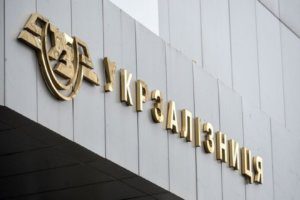
Public joint-stock company Ukrzaliznytsia in January-June 2018 saw UAH 468.36 million of net profit, which is 3.82 times more than a year ago, the company has reported in its financial statements on its website.
Pretax profit was UAH 736.598 million, which is 21.35% more than a year ago.
Net sales revenue over the period came to UAH 39.969 billion, and the production cost reached UAH 38.545 billion.
Labor costs in H1 2018 grew by 43.3%, to UAH 16.535 billion.
As reported, referring to the audited consolidated financial statements of Ukrzaliznytsia for 2017, the company saw UAH 114.55 million of net profit compared with UAH 7.322 billion of loss in 2017, while total loss came to UAH 77.24 million compared with UAH 7.43 billion a year ago.